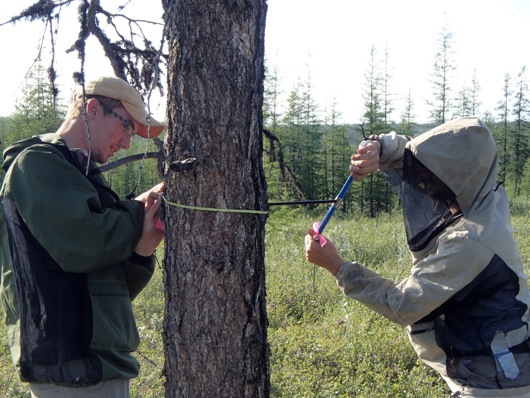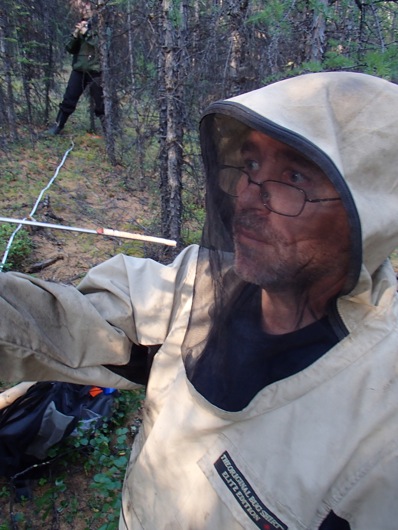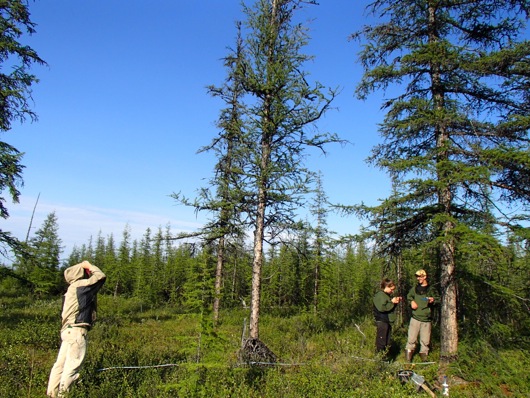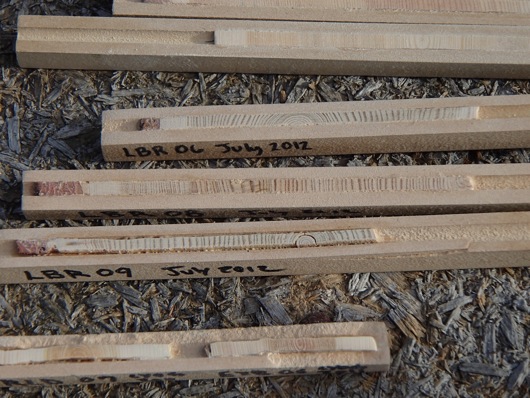(Mark Paricio is a PolarTREC Teacher accompanying the Polaris Project this summer. To read all of Mark’s journals, go to: http://www.polartrec.com/expeditions/siberian-arctic-systems-study )
Last Minute Tree Sampling
Over the last two days, many of us accompanied the researchers out to collect any nonpermanent sampling equipment, place long-term equipment to gather data over the next year until the Polaris Project returns, and take any final samples.
Learning to take Trees Cores
Last evening and this morning as well, as many students were working to get their presentations together, I had the opportunity to go to the field and take tree cores, something I had never done. Tree cores can be used to age a stand of trees to determine when the last disturbance to the areas occurred or the wood from the sample can be used for other analyses, like examining the carbon pool from which the tree absorbed its nutrients.
Here are the steps:
1. Measure the diameter of the tree at 1.4 m above the ground. This is known as the DBH (diameter at breast height). If the circumference is measured, a bit of math is involved.

Mike Loranty (right) takes a tree core while Seth Spawn measure the tree circumference.
2. Take the core by manually drilling into the tree with a very sharp, hallow steel corer. If the core is to be used to determine the age of the tree, it must contain the pith, or center, of the tree. Once the corer is drilled far enough, a very sharp, very long “Spoon” is inserted into the core that has teeth that allow for the core to be extracted while the corer is still in the tree.
3. Package the core in a straw to protect the core. Label the straw!!

I examine a tree core I took prior to storing it in a straw. Photo by Seth Spawn.
4. Measure the height of the tree. This is done by measuring a known distance away from the tree and, then, using clinometer to determine the angle to its top. With a little right triangle trigonometry, the height of the tree can be found (the height of the measurer must be added to the result of the trigonometry!).

Mike Loranty measures the angle to the top of the tree while Lindsey Parkinson and Seth Spawn record data.
5. If tree rings are to be counted or analyzed for growth patterns, the cores can be stabilized by gluing them into grooves in small tray and then sanded smoothly, using progressively finer grits of sandpaper. I spent several hours sanding several cores taken on a different day!

Sanded cores show the growth pattern cross-section of tree cores. Notice the middle of the tree, the pith, can be easily determined in most of these.
It’s always the right time to learn something new!
Stay curious my friends! – Mark Paricio



